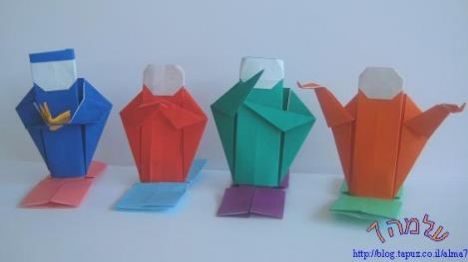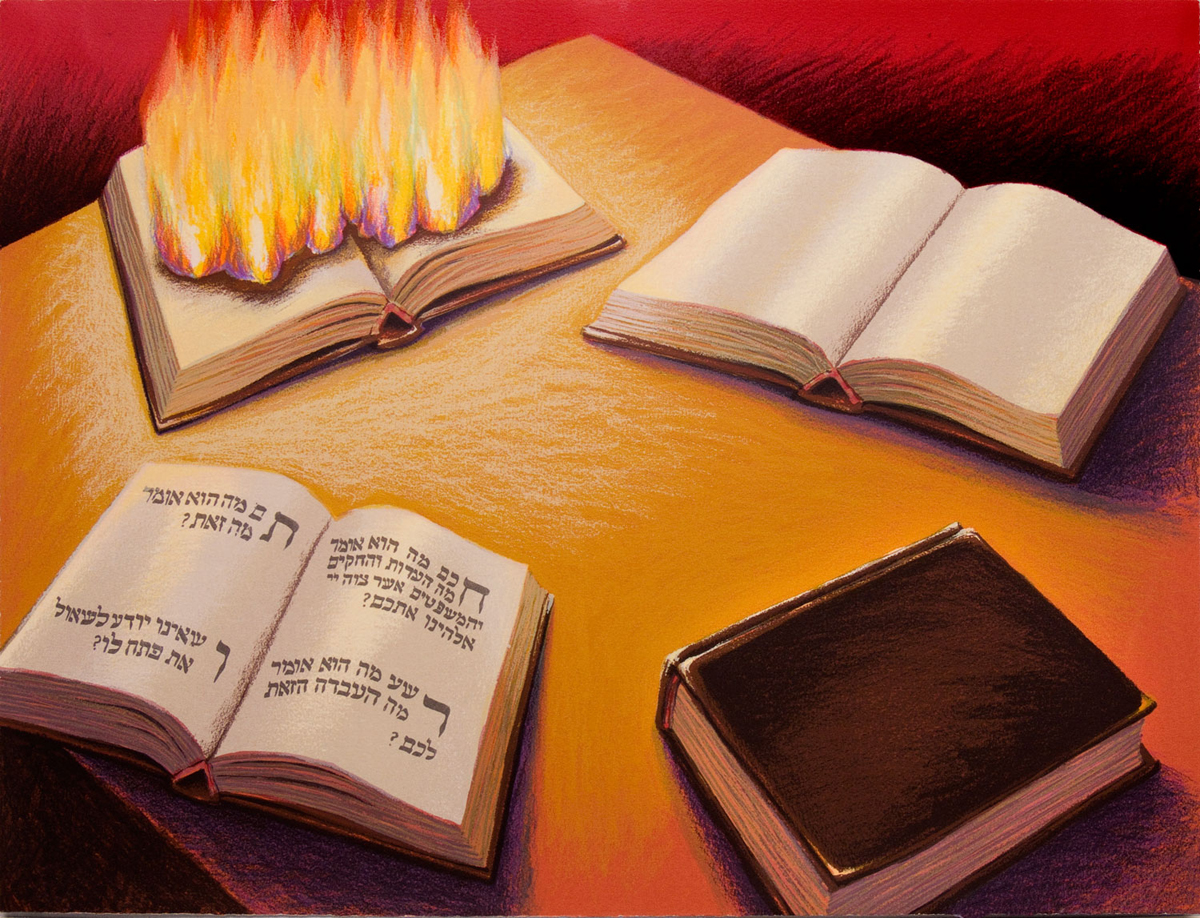The rabbis of the Haggadah understood that each person is an individual who sees the world through a different lens, who learns differently, and who has different strengths and weaknesses.
In this sheet we will look at a passage from the Haggadah and several illustrations that were inspired by it.
Each illustration will be followed by questions to help us better understand the quote from the Haggadah and our own approaches to learning.
כְּנֶגֶד אַרְבָּעָה בָנִים דִּבְּרָה תוֹרָה: אֶחָד חָכָם, וְאֶחָד רָשָׁע, וְאֶחָד תָּם, וְאֶחָד שֶׁאֵינוֹ יוֹדֵעַ לִשְׁאוֹל.
Corresponding to four sons did the Torah speak; one [who is] wise, one [who is] evil, one who is innocent and one who doesn't know to ask.
- According to the Haggadah, what four types of children are there?
- What other adjectives could you use to describe each child?
Arthur Szyk (1894-1951). The Haggadah. The Four Sons (1934), Łódź http://bit.ly/2Vkston

The way that the illustrator depicts each child says a lot about what it meant to be "wise" ,"wicked", "simple", or "unable to ask a question" in a particular time and place.
- Looking at how Arthur Szyk drew each person, what can you learn about his community?
- Why do you think he drew them as adults?
Haggadah, 1728 from the National Library of Israel manuscript collection

The artist of the picture above had a very different way of interpreting the text.
- How does he envision the different types of people?
- How do you feel about the artist's depiction?
- What does his depiction say about the normal course of human development?

If you were the teacher of the four boys pictured above, would you teach them all the same material? Would you teach the material in the same way?
How would you approach teaching each child?


The two depictions of the four children above use gestures to convey the distinct personalities .
What gestures, stances or facial expressions would you use to depict each child?

The last illustration depicts the children as books.
- Which book represents each child?
- What inanimate object could you use to depict the four types of people? How would you draw each version to depict a different child?
- Why do you think it is important for teachers and parents to recognize that there are many types of learners?
- What type of learner are you? Are you always the same type of learner? Why are you sometimes one type and other times a different type?
- How do your teachers help you to be a successful learner?
- How do you maximize your strengths and compensate for your weaknesses when learning something new?



